Montserrat, February 2015
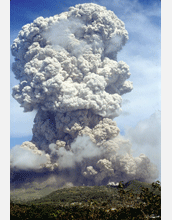
When Jimmy Buffet recorded the lines “I don’t know where I’m a gonna go when the volcano blow,” in Montserrat in 1979, he had no reason to believe that the volcano about which he sang (Soufriere on the south side of Montserrat, a small island in the heart of the Eastern Caribbean) ever would blow. She’d been dormant for centuries and showed no signs of waking up.
When the Volcano Blow
On June 25, 1997, the Soufriere volcano erupted. It wasn’t the first volcanic activity in recent years (the volcano had woken from 400 years of dormancy on July 18, 1995), and it wouldn’t be the last (it has been active for most of the last twenty years). On the following Friday, the government evacuated the villages in the volcano’s predicted path. Residents were sheltered anywhere a roof could be spared on the north side of the island – schools, churches, friends’ houses. They were told to pack for a weekend, that by Monday they would be allowed to return home.
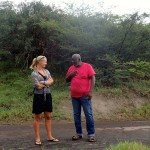
“We’re still waiting for Monday; it’s been the longest weekend of our lives,” Joe Phillip, our guide of the Soufriere ruins, told us on a tour earlier this year.
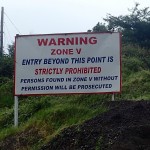
For over two years, he and his family lived in a 20×20 foot room in the Montserrat Secondary School on the north side of the island waiting to return to his home in Cork Hill. By the time the experts determined it was safe to return, he’d purchased land and built a house on the north side of the island.
There’s not much to return to Cork Hill for. A vast majority of villagers have emigrated to the UK and neighboring islands and the rest have relocated to the north side of the island; the cement roads have been uprooted by plants thriving in the lava-enriched soil; the houses have been overgrown by trees and vines; and over everything a thick dust of lava has settled – an omnipresent reminder of the loss and devastation. As we drove through his old town, Joe pointed out the window saying, “That’s where Raymond lived, that was Lazarus…” All but 19 people survived the eruptions and flows, but the evacuations and relocations have changed all Montserratians lives drastically.
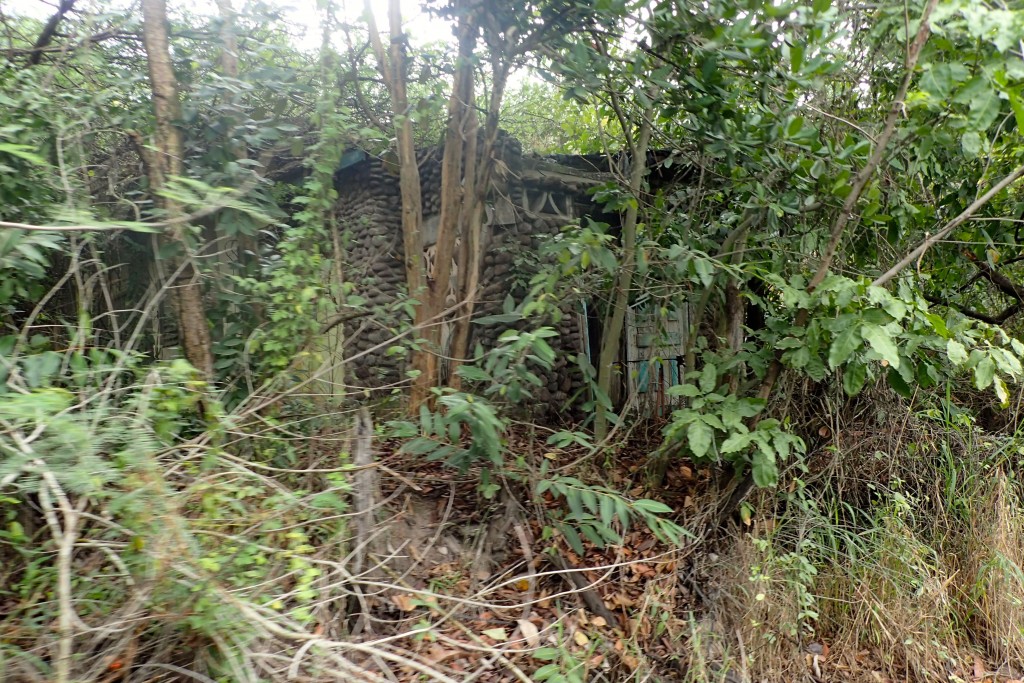
In geological terms, 20 years is a blip. In a human lifetime, it’s an eternity.
The Caribbean Emerald Isle
In the 1980s and 1990s, Montserrat was a major Caribbean destination. More than 30,000 visitors came to the island, with a population of just over 10,000. Tourists were attracted to the white sand beaches, the lush green hills and the easygoing island life. Sir George Martin, the Beatles’ producer, had a world-class recording studio on island that attracted major artists like Jimmy Buffet, The Police and Lou Reed. Airlines had direct flights to the airport on the southeast shore. The Montserrat Golf Club in Belham Valley hosted international golf tournaments. Hurricane Hugo ravished the island in 1989, but the industrious population had worked hard and fast to get the island re-opened for business.
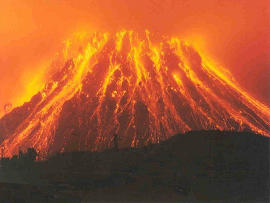
Soufriere had other ideas. A steam plume erupted from the volcano on July 18, 1995, ending its 400 years of dormancy. On the morning of August 21, 1995, the volcano emitted a thick cloud of tephra (volcanic ash), shrouding the island in fifteen minutes of darkness. Several meters of that tephra buried the capital city of Plymouth, leaving a Mars-like barren ravine of lava ash. Pyroclastic flows of hot gas and rock began in 1996 travelling miles down the valleys and burying everything and everyone in their path. And a few years later, the new lava domes that had been building over the last few years toppled over under their own weight, sending huge boulders crashing down the volcano’s slopes. It’s a cyclical process – dome collapses and pyroclastic flows – that shows no signs of abating.
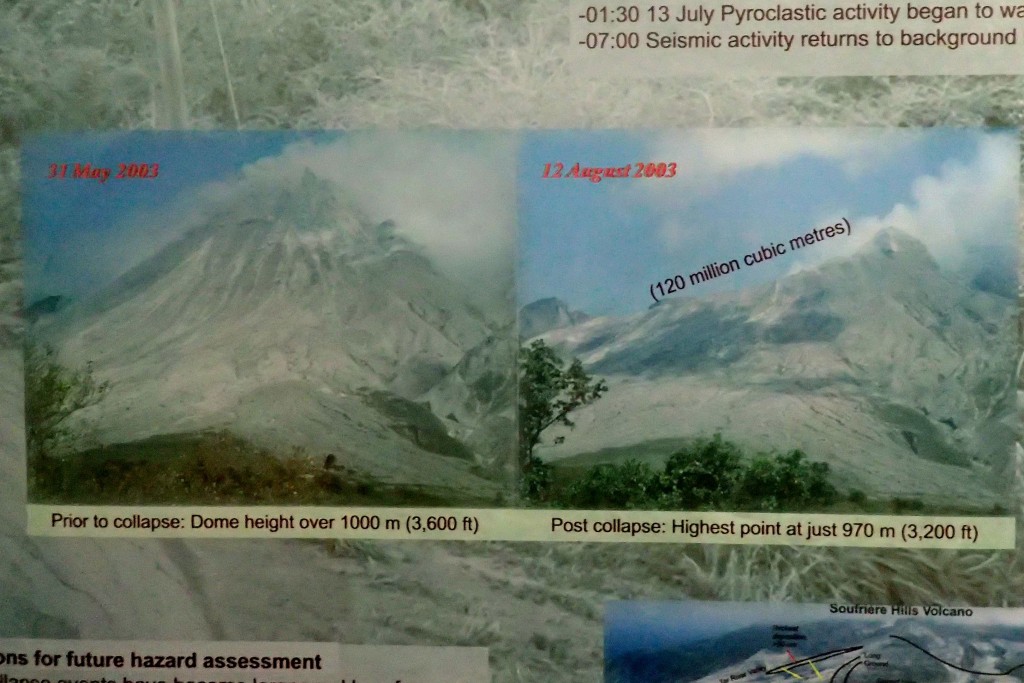
Andesite lava – the type emitted by Soufriere – is so thick that it builds up lava domes around the crater (rather than flowing down the volcano’s sides like the basalt lava emitted from Hawaiian volcanoes). The lava domes keep building until they are too tall to hold the weight, when they explode and send a pyroclastic flow of boulders and ash tumbling down the volcano’s sides. It was a slow process (by human standards) but the destruction was massive and further destruction is imminent.
A Wasteland in its Wake
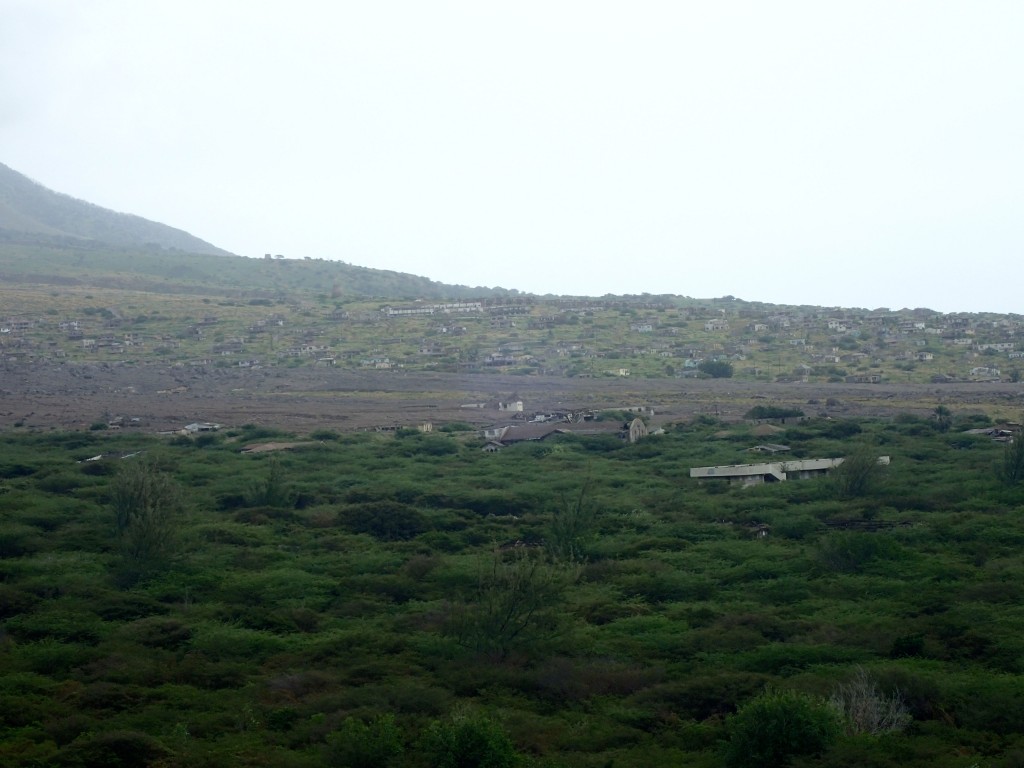
In the volcano’s wake, there are few reminders of what was once toted as the Caribbean Emerald Isle.

A few roofs in Plymouth peak up through the ash cover. Where once the Belham River flowed fifteen feet under Belham Bridge is now solid ground, second story windows of houses on the riverbanks now at ground level. The third story roof of a gingerbread house on a tee of the golf course (see photo left) is perched on top of gray dirt. Eye watering sulfuric gas hangs in the valleys and on a clear day you see smoke billowing out of the lava dome.
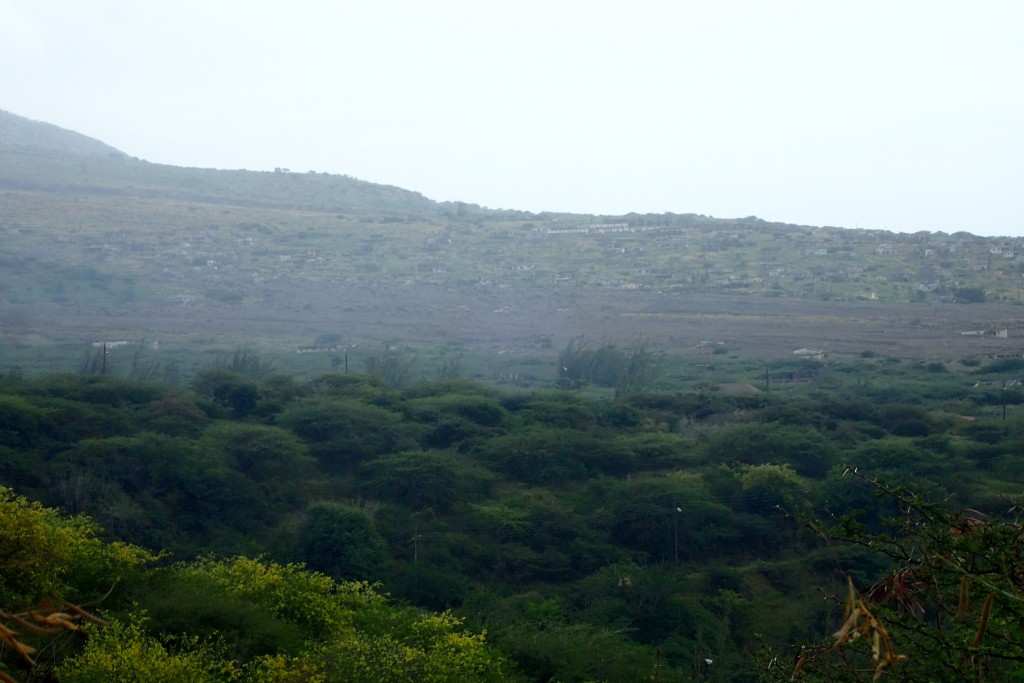
It’s hard to imagine how all this devastation occurred, but easy to think it might happen again any minute.
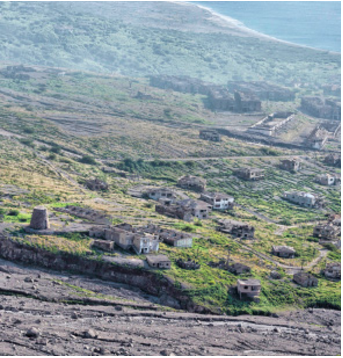
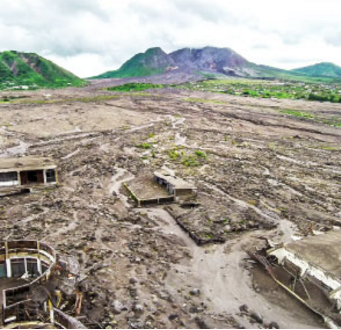
We walked through some homes in what used to be the Exclusion Zone.
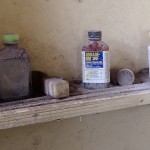
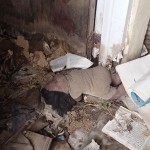
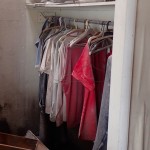
Evidence of life is scattered around – a child’s doll on the floor, clothes in the closet, books on the shelf. It reminded me of post-tsunami devastation in northern Japan – lives taken and uprooted by brutal forces of nature, the volcanoes I love to hike and the sea I love to sail bringing their full potencies to bear. Reckoning these icons of nature with the destruction they cause is a bit mind boggling and a lot heart breaking.
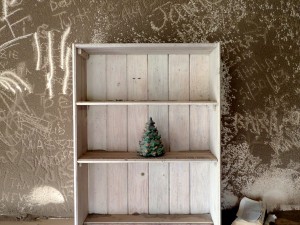
The Paris of the Caribbean
Montserrat’s volcanic eruptions over the last twenty years were preceded by nearly a century by the Martinique volcanic eruption just a couple of islands down the Eastern Caribbean chain.
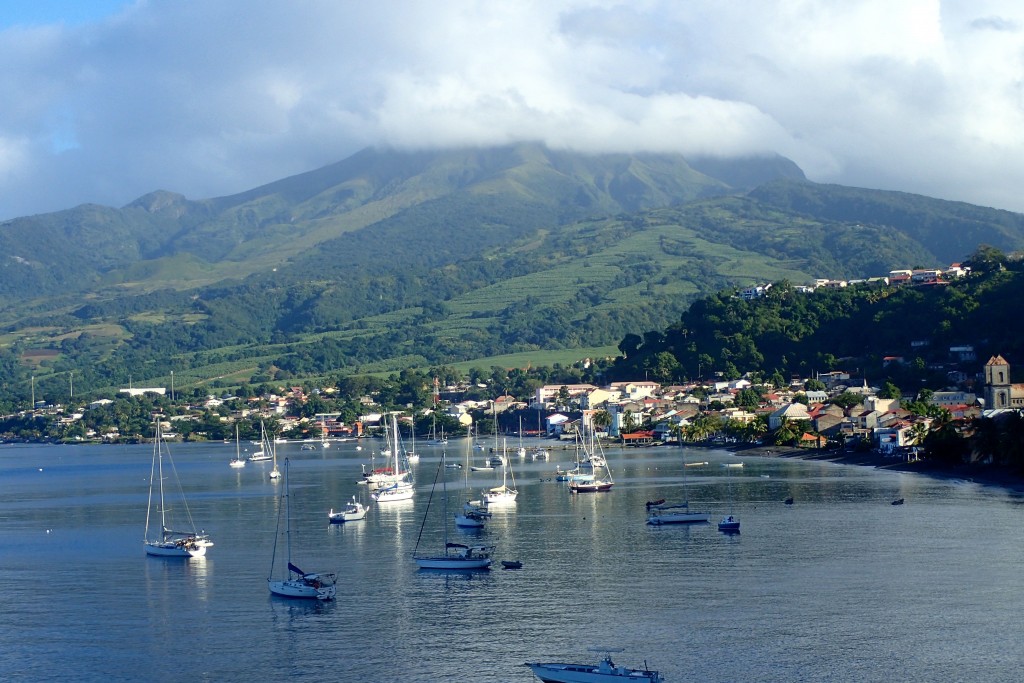
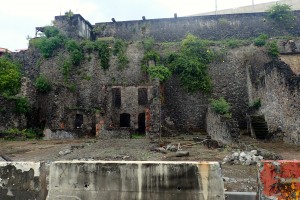
Martinique was the darling of the Caribbean in the late 1800s and early 1900s. By the turn of the century, its capital city of St Pierre was called the “Paris of the Caribbean”. St Pierre’s 30,000 residents enjoyed modern amenities like electricity, telephones and trams.
Much like Soufriere in Montserrat, Mount Pelee in Martinique had other ideas of how the island’s development would unfold. A boiling lake formed in its crater in the spring of 1902 and, on the morning of May 8, 1902, Mount Pelee erupted and split in half, sending boiling lava and gas screeching down its sides. Everything in its path – including all but a few of St Pierre’s 30,000 residents – was vaporized in minutes.
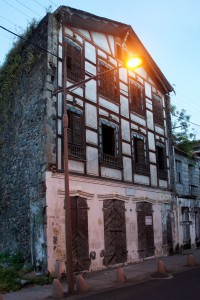
Walking the streets of St Pierre and climbing the slopes of Mt Pelee a century later gives one hope for Soufriere and Montserrat. A modern city is rising up in St Pierre’s ruins. New structures are built right on top of the cobblestone walls of the old city’s ruins, fortifying and expanding upon what once was. Farms and housing developments are inching up the slopes of Mt Pelee. It is a message to never forget but to always move forward.
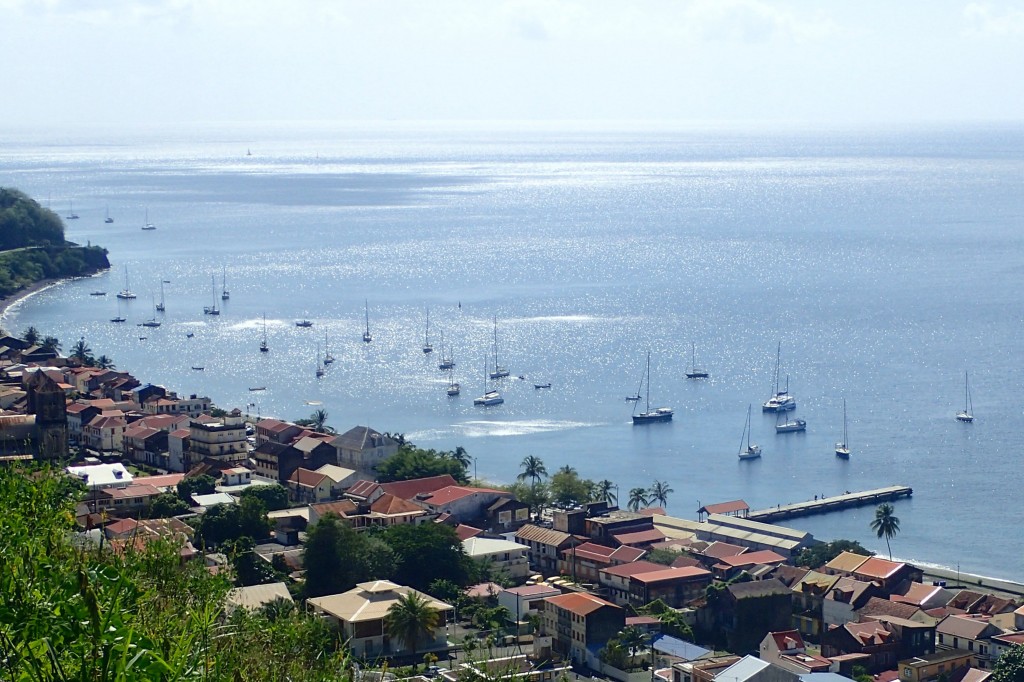
Montserrat is moving forward. Five thousand residents live on the north side of the island where lush mountains provide plenty of food and water. They are developing a new port city in the calm Little Bay on the northwest shore. Tourists come for the volcano tours and stay for the hiking, the beaches and the friendly residents. Moving forward without forgetting.
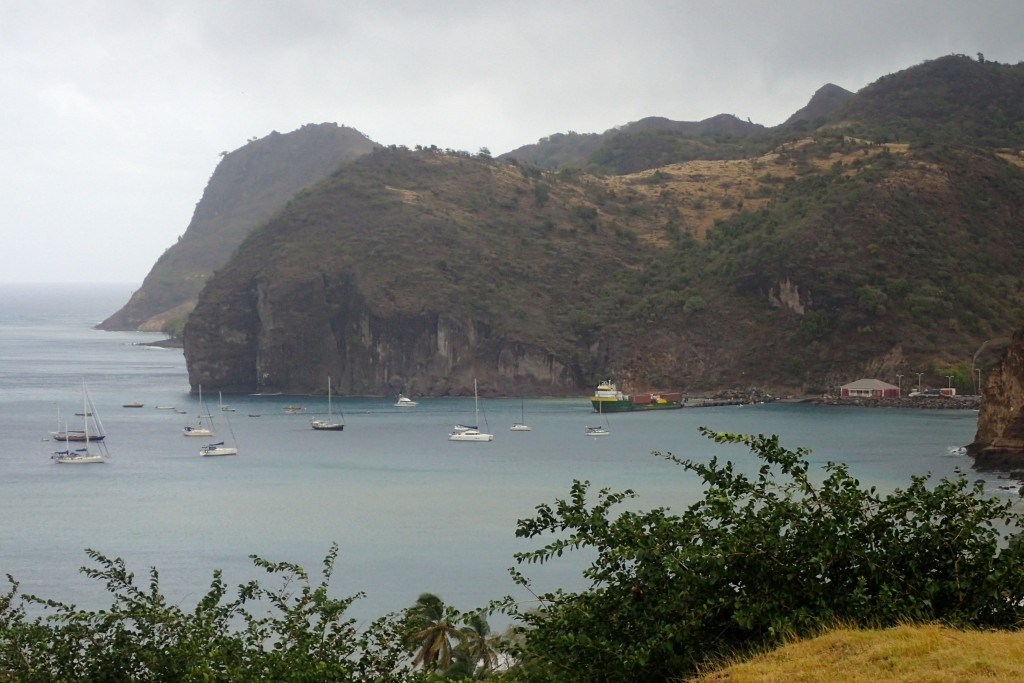
NB: For a tour of Montserrat, Joe Phillip can be contacted at joephillip@live.com or +1-664-492-1565.

“Waiting for Monday”: Fascinating stuff!